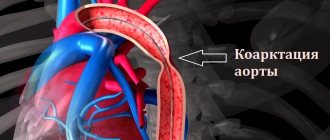Hemorrhoids are a vascular disease that is characterized by varicose veins of the anus and rectum with the formation of hemorrhoids that are prone to inflammation and prolapse.
The disease is one of the most common vascular pathologies, affecting up to 10% of the world's population, and among proctological diseases, hemorrhoids are the undisputed leader. In its development, the disease goes through several stages. Stage three hemorrhoids are a serious pathology that requires immediate treatment and often leads to serious complications. The transition of the disease to the third stage occurs for several reasons, the main of which are poor-quality therapy for the initial stage of the disease, or its absence.
Reasons for the development of the disease
Hemorrhoids are classified as vascular pathologies, and therefore their occurrence in 90% of cases is due to the adverse effects of various aspects on the blood vessels of the pelvic area. The essence of the disease is a violation of blood circulation in the veins and arteries of the rectum, in which the outflow of venous blood is disrupted. If stage 3 hemorrhoids occur, the patient experiences a strong increase in nodes, which, at the slightest strain, fall out of the anus.
The most common causes of the disease:
- unhealthy diet, which is based on refined, low-fiber foods;
- tendency to constipation;
- lack of movement;
- lack or lack of perineal hygiene;
- pregnancy and childbirth;
- lifting weights;
- bad habits - drinking alcohol and tobacco.
Of course, these phenomena cannot immediately lead to the formation of third-degree hemorrhoids, however, they provoke weakening of the vascular walls, and with a prolonged effect on the body they contribute to the progression of the disease to stage 3.
Diagnosis of the disease
Diagnosis of combined hemorrhoids is carried out using the same methods that detect individual forms of this disease. Differential diagnosis is carried out with the expectation that the symptoms of this disease may be similar to other pathologies, including cancer. Therefore, only a qualified specialist can diagnose mixed hemorrhoids, based on the symptoms when examining the patient. If necessary, the proctologist may prescribe other examination methods in order to clarify the pathology. Self-medication should not be practiced under any circumstances; a person can unintentionally complicate the course of the disease.
Symptoms of hemorrhoids at stage 3
The symptoms that characterize grade 3 hemorrhoids arise due to profound changes in the vascular wall and cavernous bodies in the rectum. Since they weaken, the nodes can no longer be held in their normal position, and fall out of the anus at the slightest strain: when coughing and sneezing, sudden movements (jumping, for example). Evacuation becomes a real torture, since the pain becomes very severe, and it does not subside for several hours after visiting the toilet.
In addition, pain may occur when walking and sitting. This is due to the fact that grade 3 hemorrhoids can be complicated by thrombosis (the pain becomes more intense and prolonged), inflammation of the mucous membrane of the anal canal, the skin of the perianal area or subcutaneous fat. Bleeding at this stage of hemorrhoids occurs very often, since the walls of the blood vessels become thinner more than at previous stages of the disease.
In the absence of therapy, the disease develops into chronic hemorrhoids of the 3rd degree. This form of the disease is characterized by periods of subsidence of symptoms and their resumption. It is important not to miss the moment and consult a doctor, even if the illness has subsided and the symptoms have weakened to the point of discomfort. It is important for patients to understand that hemorrhoids are not a disease that can disappear on their own - it will develop further, which is fraught with many serious complications.
Hemorrhoids 4 degrees
The patient's condition is rapidly deteriorating. Stage 4 hemorrhoids require immediate surgical intervention and removal of hemorrhoids. The advanced disease is characterized by pain when walking and even while sitting. Reduction of tumors into the anus is impossible.
Bleeding becomes profuse. As a result, anemia or anemia is diagnosed. The patient feels severe weakness, loss of strength, and lack of appetite. Blood clots form in the cavernous veins, which negatively affect the blood circulation process. Hemorrhoids become inflamed, thereby provoking the appearance of suppuration and necrosis, dead areas of soft tissue. Harmful bacteria spread throughout the body and worsen the condition.
Treatment methods for hemorrhoids at stage 3
A disease such as grade 3 hemorrhoids requires complex treatment. It must include symptomatic therapy, treatment of blood vessels and normalization of intestinal functions. In addition, most patients diagnosed with the third stage of hemorrhoids are treated with surgical or minimally invasive treatment using the following methods:
- ligation of the hemorrhoid with latex rings;
- disarterization of hemorrhoids;
- hemorrhoidectomy;
- removal of hemorrhoids with laser or high-frequency currents;
- cryotherapy;
- infrared or electrocoagulation of hemorrhoids (the latter is rarely used).
Each of these procedures has features that allow them to be used in different situations. Thus, the method of removing hemorrhoids with a laser and a high-frequency coagulator is effective and easy to rehabilitate. They can be used for any size of nodes and even for bleeding from hemorrhoidal veins.
Rice. 3 Stage of ligation of the hemorrhoid using latex rings. The simplest, most popular and effective method of treating stage 2–3 hemorrhoids.
Latex ligation and dearterization are also quite effective procedures used to eliminate pathologies such as stage 3 hemorrhoids - treatment with their use ends successfully in most cases, however, they have more contraindications than laser removal of venous plexuses, and also carry the risk of bleeding or inflammation of the mucous membrane.
Coagulation of the vessels feeding the hemorrhoid is another popular method of eliminating the disease, which allows you to eliminate the symptoms of the disease within a few hours after the procedure. Hemorrhoidectomy also has the most radical effect - a radical procedure that consists of removing hemorrhoidal plexuses in the classical way (with a scalpel) or using a laser or high-frequency scalpel.
Rice. The stage of the operation is hemorrhoidectomy, suturing and ligation of the hemorrhoidal artery, the so-called “pedicle of the hemorrhoid.”
It is important to remember that treating grade 3 hemorrhoids without surgery (surgical or minimally invasive) is a myth. No drug can return the vessels in the rectum to their original healthy state. In this case, minimally invasive treatment methods are the least traumatic. If the disease reaches the third stage, the patient will sooner or later have to turn to a proctologist surgeon for help.
Chronic combined hemorrhoids - treatment
Depending on the severity of the pathology, the proctologist determines the treatment tactics. With grades 1 and 2 of hemorrhoidal development, conservative therapy with medications is possible. More severe pathology requires radical therapy. The hospital's first surgical department uses various surgical techniques. Surgery for combined hemorrhoids is preferable, which is performed using gentle techniques to achieve minimal trauma to healthy tissue.
Nutrition for grade 3 hemorrhoids
Normalization of nutrition is an important condition for eliminating grade 3 hemorrhoids. Even if the patient has undergone surgery, nutrition will determine his condition in the near future (in the postoperative) period and for at least 2–3 months after treatment. So, even a small error when drawing up a menu can result in constipation or diarrhea, which will lead to an exacerbation of hemorrhoids or the appearance of new nodes.
To prevent this, it is recommended to adhere to the following nutritional principles:
- give up alcohol, coffee and carbonated drinks - they weaken blood vessels and irritate the intestines;
- do not eat hot and spicy foods - they irritate the intestines and provoke stool disorders;
- enrich your diet with fiber - it is found in fresh fruits, vegetables and dark-colored cereals;
- introduce vegetable oil into the menu - as a dressing for cereals and salads, it will help enhance peristalsis;
- drink at least 2 liters of water per day.
In the postoperative period, the diet should be as strict as possible. Porridges (oatmeal or pearl barley, preferably mucous), weak broths from lean chicken meat (without skin!), stewed or pureed vegetables, juices and tea, and whole grain bread are allowed to be used as food. After a week, the menu can be diversified.
Disease prevention
Even in the absence of symptoms, it is extremely important to follow preventive measures to avoid the appearance of hemorrhoidal cones and an increase in their size. To do this, you should visit a proctologist every six months for diagnostic tests. At home, it is recommended to do baths and microenemas, and use rectal suppositories, which have a positive effect on the microflora and the condition of soft tissues. In a hospital setting, cauterization of blood vessels is performed.
It is important to follow a diet, include fermented milk products, fruits and vegetables in your diet, and drink plenty of clean water. To improve the functioning of the esophagus, avoid excessive consumption of caffeine and alcoholic beverages. Spicy seasonings and sauces irritate the intestinal mucosa.
Every day you need to walk in the fresh air and do physical exercise. This prevention is especially important for people who lead a sedentary lifestyle. Squats will help relax your muscles and improve blood flow in your veins and arteries.
Proctologists advise limiting heavy lifting and excessive physical activity. Try to minimize muscle tension. To activate blood circulation in the anus and avoid enlargement of hemorrhoids, you can rinse the anus with cool water using herbal remedies.
To avoid irritating the soft tissue of the anus, you should purchase damp toilet paper. Only with a timely visit to a proctologist can complications and the development of proctological diseases be avoided. To make an appointment, call the number listed on the official website. An employee of the private medical clinic “Proctologist 81” will call you back and confirm the selected time. Prices for diagnostic tests and procedures are posted on the website. The cost depends on the stage of the disease and the presence of concomitant pathologies.
What happens if you don’t see a doctor in time?
The third stage of hemorrhoids is a serious disease that requires immediate assistance from specialists. The lack of qualified treatment leads to complications, transition to the most complex, life-threatening form - the fourth. The last stage of hemorrhoids is treated exclusively by surgery.
- The presence of cracks in the anus opens the door for pathogens to enter the intestines. Inflammation progresses, mucus and pus begin to be released, accompanied by an unpleasant odor.
- Loss of sphincter elasticity leads to uncontrolled release of feces. Irritation of the rectal mucosa occurs, ulcers, erosions, and wounds appear. The passage of feces during defecation provokes bleeding of varying intensity.
- Loss of nodes is dangerous due to strangulation, thrombosis, and tissue necrosis. This situation requires emergency surgical intervention.
Proper nutrition and diet
Intestinal diseases are becoming one of the most important provocateurs of hemorrhoids. Provoke relapses of stool disorders, especially constipation. To alleviate the course of the disease and prevent relapses, you must constantly adhere to a diet and eat right.
Products can increase painful sensations and weaken them. You just need to choose the right diet:
- Avoid fried, spicy, salty and fatty foods.
- Eat small meals 6 times a day. Dinner should be no later than 2 hours before bedtime.
- Avoid alcoholic drinks, carbonated drinks, and coffee.
- Do not eat legumes, cabbage, beer, or sweets. These foods cause fermentation and bloating.
- Eat more cereals, vegetables, fruits, drink still mineral water, green tea, dried fruit compote.
- Fermented milk products improve intestinal function, normalize microflora, and eliminate constipation.
Nutrition plays a very important role in the treatment of hemorrhoids, preventing relapses, and recovery after surgery.
Post Views: 31,496
Classification of the disease
Depending on the form of manifestation:
- Internal hemorrhoids. The affected veins are located in the anal canal and are not visible during normal examination. When defecation or strong tension in the anus, hemorrhoids fall out, which is accompanied by acute pain and often bleeding.
- External hemorrhoids. Hemorrhoids are initially located on the outside. Unlike the internal ones (covered by the mucous membrane), they are covered with skin and do not bleed during bowel movements.
- Combined hemorrhoids. The patient simultaneously has both internal and external hemorrhoids.
Depending on the nature of the course:
- Spicy. Accompanied by severe pain. Inflamed veins first turn blue and then (in the absence of proper treatment) turn black. Tissue necrosis begins.
- Chronic. The pain is mild. The patient first calmly resets the prolapsed nodes on his own. But if nothing is done, then he needs outside help for this procedure, and then it becomes completely impossible to straighten the nodes.
Is treatment possible without surgery?
Treatment methods for late stages of hemorrhoids are somewhat different from the first two. External remedies in the form of creams, ointments, lotions, and suppositories are ineffective. They are used only as concomitant medications on the path to recovery. They relieve the external manifestations of the disease - itching, burning, pain, stop bleeding, but the enlarged nodes do not disappear.
However, surgery does not guarantee complete recovery or absence of relapses. Treatment must be comprehensive. Enlarged nodes are removed using minimally invasive methods, and treatment is continued with medications and folk remedies. In parallel with this, they make adjustments to lifestyle, nutrition, and normalize intestinal function. Only with maximum effort on the part of a person can a positive result be achieved.
At home, you can achieve a reduction in the size of hemorrhoids in the early stages of the disease. Therapy for more severe forms involves the use of minimally invasive methods, which, in general, can hardly be called surgery. The procedure is carried out for several minutes under local anesthesia. The person goes home to continue treatment after receiving specialist advice. Therefore, if there is a question about a classic operation with a scalpel, general anesthesia, you can do without it at stage 3 of hemorrhoids.









